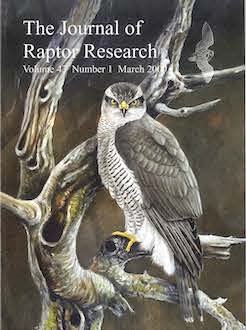Chesapeake Bay, in the northeastern United States, is believed to support the largest concentration of breeding Ospreys (Pandion haliaetus) in the world. Following the banning of DDT, this population exhibited significant spatial variation in growth rates, with the fastest and slowest rates occurring in the lowest and highest salinity areas, respectively. Because salinity can influence fish distributions, we quantitatively analyzed Osprey diet composition along the gradient in the Chesapeake Bay to determine if variation in foraging ecology contributed to this pattern of population recovery. We recorded >1800 hr of food-provisioning behavior for 25 pairs within nine study areas that were classified as either upper estuarine (<5 parts per thousand [ppt] salinity) or lower estuarine (>18 ppt). Atlantic menhaden (Brevoortia tyrannus) and seatrouts (Cynoscion spp.) were dominant dietary components for pairs within lower-estuarine reaches, whereas gizzard shad (Dorosoma cepedianum) and catfish (Ictaluridae) dominated upper-estuarine diets. Lower-estuarine prey fish averaged 6% shorter (Kolmogorov-Smirnov test: D = 0.203, P = 0.004), 34% lighter (D = 0.305, P < 0.001), and 40% lower in energy content (D = 0.247, P < 0.001) than their upper-estuarine counterparts. We conclude that diet quality may be contributing to spatial variation in the growth rate of the Chesapeake Bay Osprey population.
How to translate text using browser tools
1 March 2009
Osprey Diet Composition and Quality in High- and Low- Salinity Areas of Lower Chesapeake Bay
K. Andrew Glass,
Bryan D. Watts
ACCESS THE FULL ARTICLE

Journal of Raptor Research
Vol. 43 • No. 1
March 2009
Vol. 43 • No. 1
March 2009
Chesapeake Bay
diet
foraging ecology
osprey
Pandion haliaetus
population regulation
salinity




